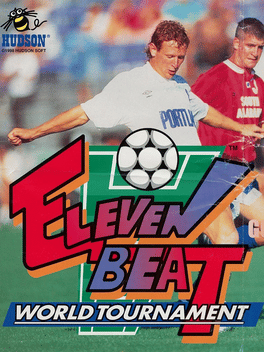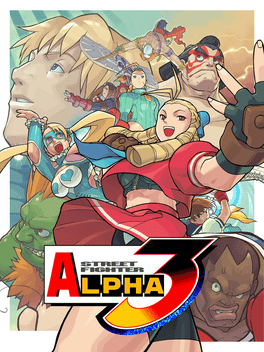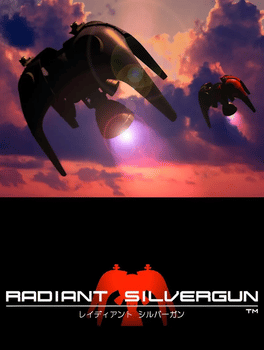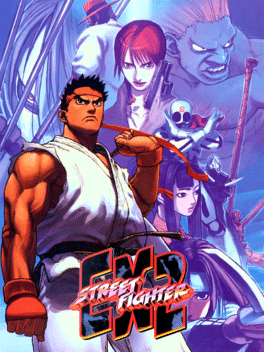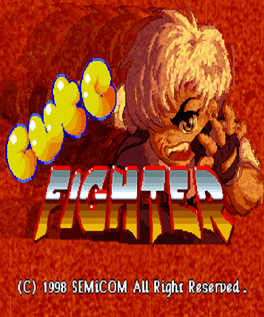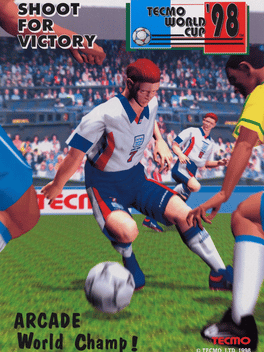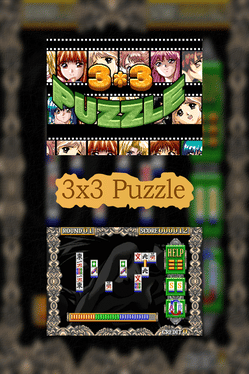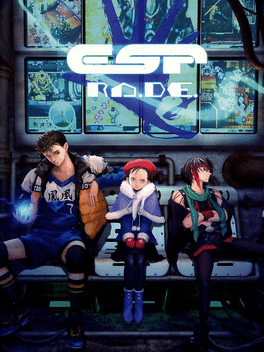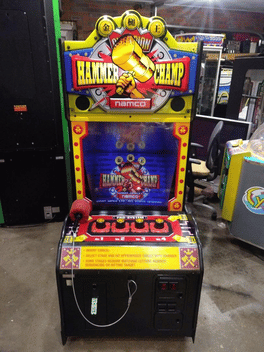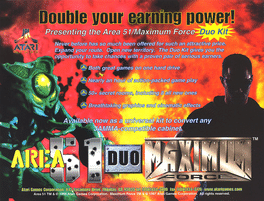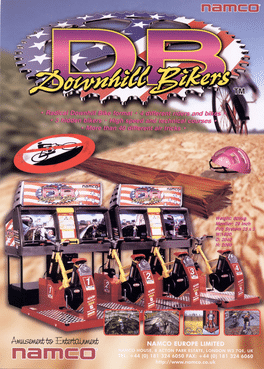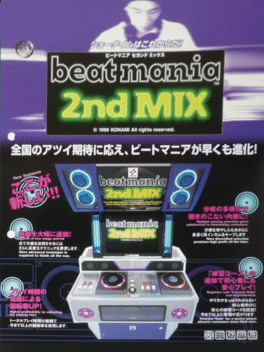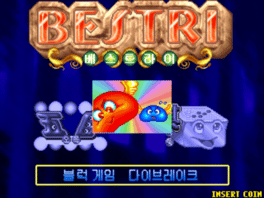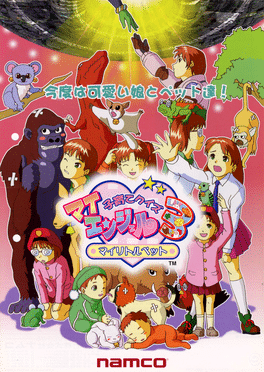New Arcade Games - Page 51
-
Tetris: The Grand Master
1998
The first entry in the Tetris: The Grand Master sub-series, this game plays similarly to other Tetris games, but rather than merely expecting the player to survive indefinitely, it challenges the player to attain the highest level and score they can in the shortest amount of time. The Grand Master series introduced several play mechanics to Tetris gameplay which can be seen today in its sequels and many other Tetris implementations. -
Billiard Academy Real Break
1998
A pool game where you are awarded Pictures of some Asian babes when you win the round. -
Daytona USA 2: Battle on the Edge
1998
Daytona USA 2: Battle on the Edge is an arcade racing game released by Sega in 1998 as a follow-up to the extremely successful Daytona USA. The game featured vastly superior graphics, utilizing the Sega Model 3 hardware. The majority of Daytona USA 2 cabinets were released as deluxe models (with far fewer Twin Cabinets), which could be linked together for up to four players. A notable change from the original is that the player has the choice from multiple cars, each with varying capabilities for varying levels of player experience. Just like before, the game has three courses – a Beginner course with 8 laps, an Advanced course with 4 laps, and a long Expert course with 2 laps. The 'time lap' mode also returns, and is accessed in the same manner – by holding down start at the transmission select screen. Like the original game, mirrored versions of the tracks can also be played by holding down the Start button when selecting the course. It is recommended, however, that the player has had mastery of the course be -
Eleven Beat World Tournament
1998
An arcade football game featuring international teams. Play a friendly against a friend or play a tournament against CPU players. -
Street Fighter Alpha 3
1998
star 8Street Fighter Alpha 3 is the third game in the Street Fighter Alpha series. It features a complete gameplay overhaul with the addition of three selectable fighting styles, new stages, over seven new and returning characters and an exclusive soundtrack. The game's illustrations, select screens, soundtrack and sound effects all have a similar style to the Final Fight series, unlike the previous games. -
Radiant Silvergun
1998
Radiant Silvergun
1998
star 8.6Unlike in most other shoot 'em ups, there are no power-ups. All weapons are available from the start. Weapons can 'level up', however, becoming more powerful as the player uses them to score points. There are a selection of 7 weapons that can be used at any given time: The game is designed so that there is almost always a 'right' weapon for any situation. The bosses in the game are designed so that they have multiple 'sections' which, if all destroyed before the 'core' of the boss, will award the players with point bonuses. Being able to apply the right weapons on any different boss is key to obtaining these bonuses. For example, a boss may have two sections located on either side of the screen. You could immediately go up to one and begin shooting it with a vulcan, or you could hover in the centre and hit both at the same time with the side bombs. This would increase your chance of obtaining the bonus before the time limit runs out and the boss self-destructs. The game rewards players for "chaining" enemies of j -
Street Fighter EX2
1998
Street Fighter EX2
1998
star 7.6The original version of Street Fighter EX2 retains all the features from the previous game, Street Fighter EX Plus, including original features such as "Guard Breaks" (unique moves which cannot be blocked by an opponent) and "Super Canceling" (the ability to cancel a Super Combo into another Super Combo). The primary new feature in the game are "Excel Combos", ("excel" being abbreviation for "extra cancel"). Much like the "Custom Combos" featured in the Street Fighter Alpha series, Excel Combos allows player to connect a series of basic and special moves for a limited time. During an Excel Combo, the player begins with a basic move and can follow up with a different basic move or follow-up a basic move with a special move, which can be followed by a different special move. However, the player cannot connect any move with the same move, nor can they cancel special moves into basic moves during an Excel Combo. -
Cute Fighter
1998
Cute Fighter
1998
Released in 1998 by SemiCom, Cute Fighter is a sequel to SD Fighters, that aims to be even cuter! -
Tecmo World Cup '98
1998
-
Virtua Striker 2 Version '98
1998
Virtua Striker 2 Version '98 is an expanded version of Virtua Striker 2 for Sega Model 3 arcade hardware. Version '98 has the same number of teams as the orignial (26), but changes some of the countries. -
3X3 Puzzle
1998
-
ESP Ra.De.
1998
ESP Ra.De.
1998
ESP Ra.De. is a 1998 arcade game developed by Cave and published by Atlus. It is the first non-DonPachi game released by Cave. ESP Ra.De. received spiritual prequels in the form of the Espgaluda series; however, ESP Ra.De. is related to the Espgaluda series only by shared name and programmer Tsuneki Ikeda. -
Hammer Champ
1998
Hammer Champ
1998
Hammer Champ is a 1998 arcade mechanical game developed and produced by Namco. The player is tasked with completing a score of assorted mini-games using a plush mallet to hit four different buttons on the cabinet. -
Area 51/Maximum Force Duo
1998
Players can choose to play either of these previously released titles. In the first game, use a light gun to shoot infected human "zombies", aliens and their mothership. In the second game, players shoot terrorists. -
Downhill Bikers
1998
Downhill Bikers
1998
Downhill Bikers is an arcade bicycle racing game released by Namco in 1998. One to four players race downhill to compete for time, performing aerial stunts from mid-course jumps. -
Beatmania 2ndMix
1998
Beatmania 2ndMix
1998
Beatmania 2ndMIX is a rhythm game developed by Konami. It is the second game in the beatmania series and is part of the BEMANI franchise ( which it was named after: BEatMANIa ). The game is played with a controller with one turn table and 5 keys, three white and two black. On the screen you will see bars moving from the top to bottom in columns representing each of the keys and the turntable. When the bars reach the judgement line it is time to scratch. Beatmania 2ndMix is the first time the hidden modifier was included, which hides notes halfway down the screen. The Difficulty levels have been reworked to a scale between 1 and 6. All songs from the first game moves on, combined with some remixes and 13 totally new songs for a total of 25 tracks to play. -
Bestri
1998
-
Kosodate Quiz My Angel 3
1998
A Japanese quiz game featuring cute little children. The title of this game translates from Japanese as 'Raising Children Quiz My Angel 3'. -
Radikal Bikers
1998
Radikal Bikers
1998
Radikal Bikers is set in a Mediterranean environment, and is based on delivering pizza on a rare Italian scooter called Italjet Dragster in heavy traffic before your AI opponent does, while getting points. It has three difficulty levels, which correspond to each of the different places: Capricciosa (medium, set in Rome), Margherita (easy, set in Milan) and Diabola (hard, set in Naples). If you beat all four races in a level, you get to play the next level free. -
The Fallen Angels
1998
The Fallen Angels
1998
Fallen Angels is a two dimensional fighting game that takes a somewhat realistic approach in its gameplay, with super powered moves and with fluid movements animated using real motions (which was also featured in Art of Fighting 3). Projectile attacks are limited to three characters, atypical for the game's genre. The game featured eight playable characters: Cool, Harry Ness, Yuiren, Yuiran, Tarō, Torao Onigawara, Ruccio Roche and Haiji Mibu. The boss characters are Trigger and Carlos.



